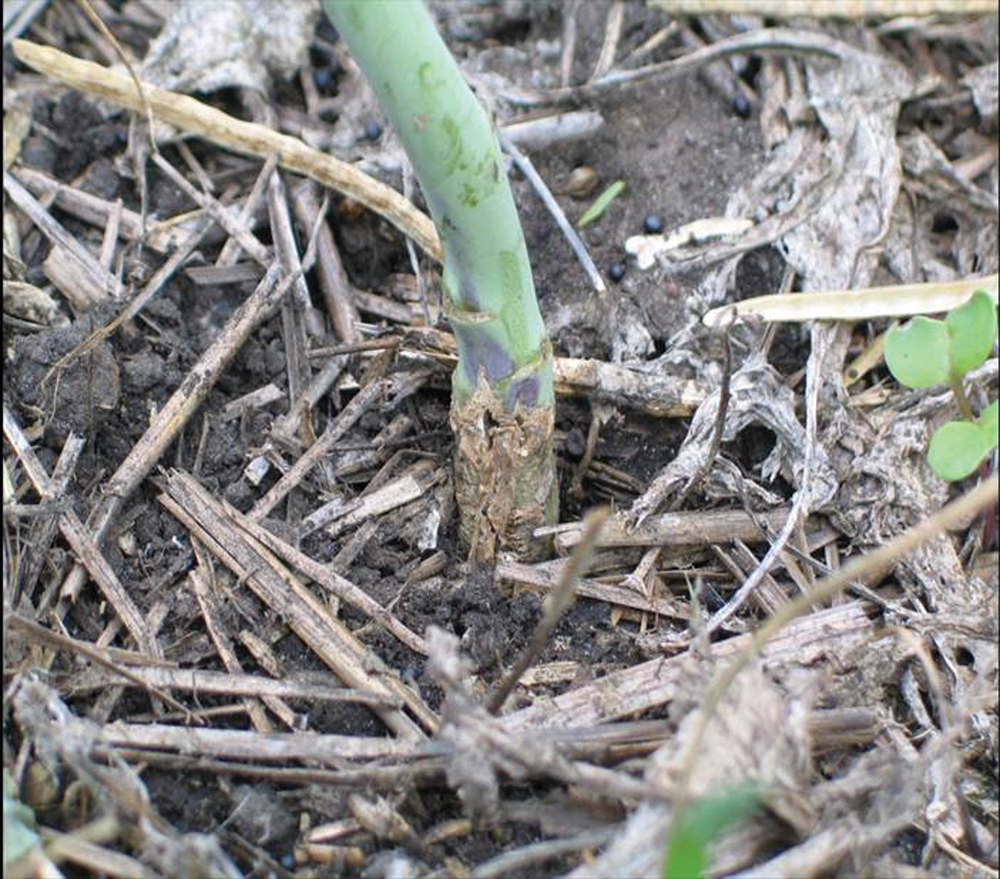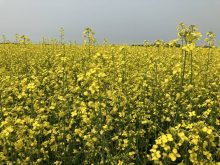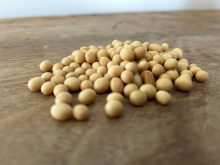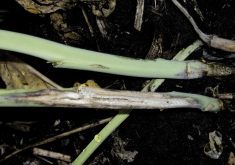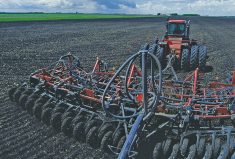You probably already have blackleg in your field. But you just don’t know it.
“When we did our survey in 2016, we found blackleg in almost 90 per cent of the fields we looked at,” said Mike Harding, research scientist in plant pathology with Alberta Agriculture and Forestry. “If we looked harder, we probably could have found it in just about all of them.”
But the good news from last year’s survey of almost 500 fields is that the severity of the disease was low — the highest infestation that was found rated only 0.4 on a scale of zero to five.
Read Also

Hail research hopes to benefit potato growers
Alberta research scientist measures hail storm and heat dome affects on potato crops
“There are some fields that have high levels of blackleg that would have had an economic impact but they are relatively few,” said Harding. “Currently, the majority of canola fields we visited did not have economic levels of blackleg because resistant cultivars were being used and they were effective.”
But producers still need to be vigilant — high levels of the pathogen and short rotations are a recipe for trouble.
“We need to be watching for it, scouting for it and taking precautions to manage it,” said Harding. “We could see the emergence of new virulent pathotypes that can overcome the resistance and that’s a big concern.”
The fungus infects canola in the early vegetative stages, when the plant is in cotyledon or early leaf stages. It invades the leaf, travelling down the stem to the base of the plant, where a canker will develop in the most severe cases.
“All of a sudden, you get a canker in the stem and it’s cutting off water and nutrients and then the seed doesn’t fill properly and you see these plants that are ripening prematurely and there’s a yield loss,” said Murray Hartman, an oilseed specialist with the province.
If stems are examined at harvest time, producers will often see blackening right at the soil surface, where the fungus is growing inside the stem. If the canker is not present, the yield loss is slight to moderate.
“Even if it doesn’t look like you have blackleg, you should be snipping your plants and just seeing how many of them do have blackening and how much of the core has blackened,” said Hartman. “It gives you a heads-up on whether the blackleg is starting to build in the field.”
If there’s a significant amount of blackening at the bottom of the stem, it will have an impact on yield.
Using resistant varieties, fungicides, and seed treatments — along with proper rotations — should keep blackleg at low levels. But the latter is a challenge given the profitability of canola.
“Blackleg is one of those diseases that will do much better in a short rotation — a one-in-two-year rotation versus a one in three or a one in four,” said Hartman.
But because of the economics, Hartman said he doesn’t think that growers will lengthen their rotations any time soon.
“So we have to do a better job with the scouting, and using variety resistance. In those cases where we have a problem field, those are the cases where a rotation has to be extended.”
But the wild card in this situation is China, which buys about 40 per cent of Canada’s canola annually.
It has been saying for years that it fears Canadian canola seed could introduce blackleg to the country (even though the seed goes straight to crushing plants and not to farms). Last year, China threatened to slash dockage levels to one per cent from the current 2.5 per cent — a potential crisis for Canadian canola exports that took the involvement of the prime minister to avert.
But the deal only secures market access at current dockage levels until 2020, so the issue should remain on the radar of producers, said Hartman.
“Their (Chinese) varieties already have blackleg resistance — it’s not like they have nothing for resistance if it does get there. But it is one of the trade concerns,” he said. “As an industry, we have to be cognizant of this, and as a grower, you also have to be because of your yield and the profit, too.”


